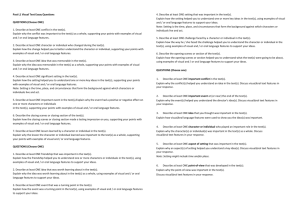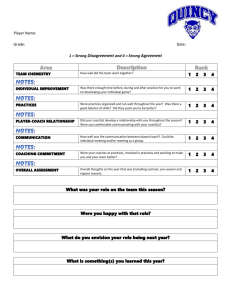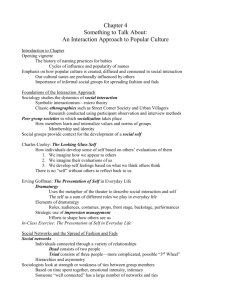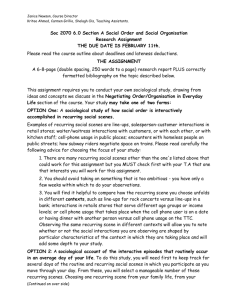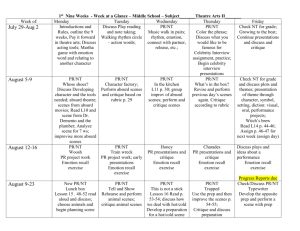Occupations:
advertisement
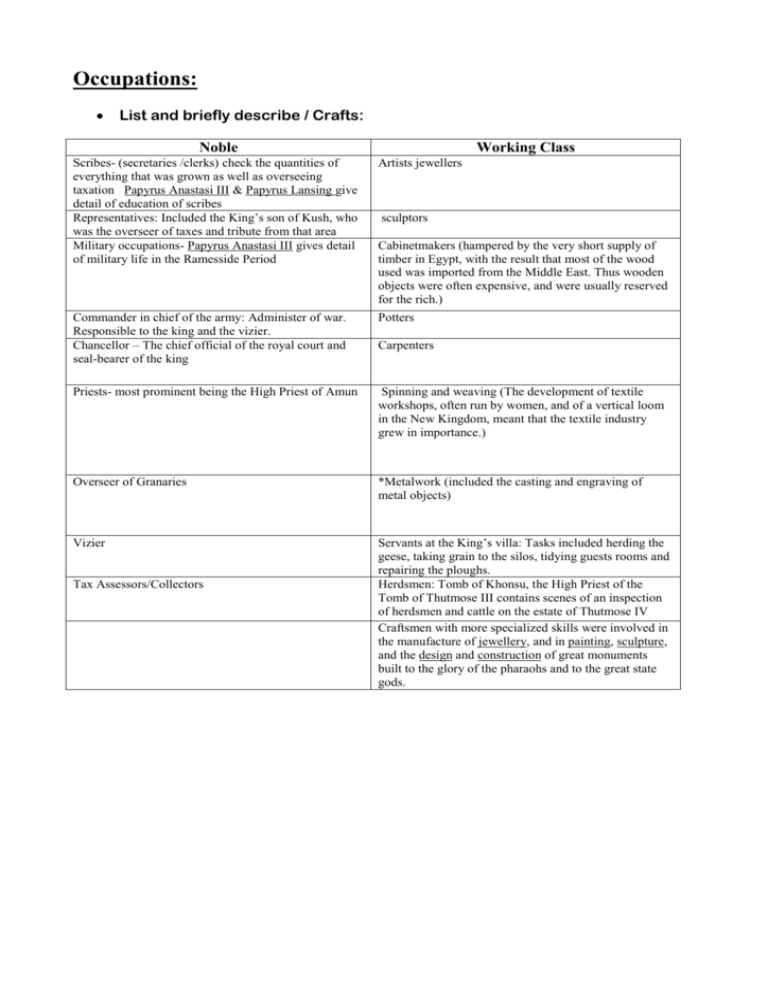
Occupations: List and briefly describe / Crafts: Noble Working Class Scribes- (secretaries /clerks) check the quantities of everything that was grown as well as overseeing taxation Papyrus Anastasi III & Papyrus Lansing give detail of education of scribes Representatives: Included the King’s son of Kush, who was the overseer of taxes and tribute from that area Military occupations- Papyrus Anastasi III gives detail of military life in the Ramesside Period Artists jewellers Commander in chief of the army: Administer of war. Responsible to the king and the vizier. Chancellor – The chief official of the royal court and seal-bearer of the king Potters Priests- most prominent being the High Priest of Amun Spinning and weaving (The development of textile workshops, often run by women, and of a vertical loom in the New Kingdom, meant that the textile industry grew in importance.) Overseer of Granaries *Metalwork (included the casting and engraving of metal objects) Vizier Servants at the King’s villa: Tasks included herding the geese, taking grain to the silos, tidying guests rooms and repairing the ploughs. Herdsmen: Tomb of Khonsu, the High Priest of the Tomb of Thutmose III contains scenes of an inspection of herdsmen and cattle on the estate of Thutmose IV Craftsmen with more specialized skills were involved in the manufacture of jewellery, and in painting, sculpture, and the design and construction of great monuments built to the glory of the pharaohs and to the great state gods. Tax Assessors/Collectors sculptors Cabinetmakers (hampered by the very short supply of timber in Egypt, with the result that most of the wood used was imported from the Middle East. Thus wooden objects were often expensive, and were usually reserved for the rich.) Carpenters Agricultural activities related to each season - Agriculture was the most important activity in ancient Egypt and the peasant farmer was the backbone of society (ie agriculture and peasant farmer was the backbone of Egyptian economy) - The farming calendar was organized around the annual flooding of the Nile - 19th Dyn. Tomb of Ipuy the sculptor contains agricultural scenes; herding animals; market scenes; wine press and vintage scenes and marsh scenes Akhet –The season of inundation: - As the Nile began to rise, farmers moved their cattle to higher ground and fed them by hand with fodder already in storage Because the land was under flood during this season it was a time for: - repairing equipment and making objects for use in the household - major building works: central authorities could demand services of peasants to labour on large-scale constructions, eg. temples Perit – The coming Forth: or growing season - most labour intensive part of the year - preparation for ploughing and planting: people worked frantically to get the land and irrigation system back to normal after the floods so that planting could take place before soil dried out - crops were sown by spreading the seeds by hand; animals were used to tread them into the ground - main crops: wheat, barley, and flax, grown for weaving into linen. - when sowing was completed, had to water fields by shadouf - small boys spent their days in the fields and gardens scaring birds that ate the newly sown seeds - farmers would pray to the gods to deal with plagues of insects, particularly locusts Shemu – The season of harvest: (most common tomb scenes) - grain had to be harvested, threshed, winnowed, measured and transported to storage bins - Pharaoh’s officials carried out annual census and tax assessment - surveyors measured the fields before harvesting - this formed the basis of the tax assessment - harvested and processed grapes (for wine) generally drunk only by the wealthy (ordinary Egyptians drank a weak beer)

